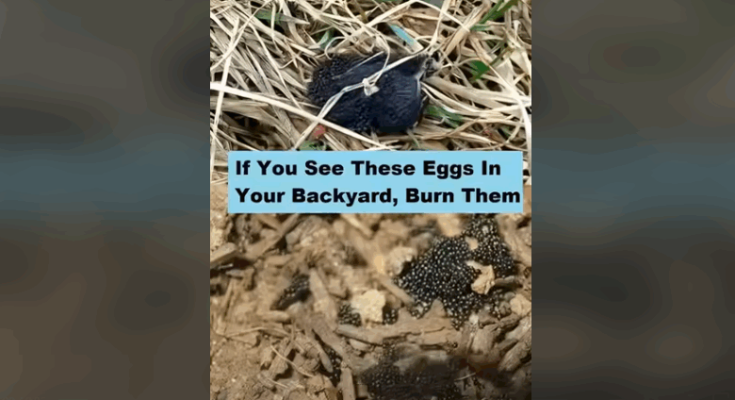Finding strange clusters of eggs in your backyard may not seem like a big deal at first glance. But if those eggs belong to ticks, what you’ve stumbled upon could become a serious health hazard for you, your pets, and even your neighbors. Ticks aren’t just annoying parasites—they are notorious carriers of dangerous diseases, and their life cycle starts with the tiny eggs you might find in sheltered, hidden corners of your yard. Understanding what tick eggs look like, why they pose such a threat, and how to deal with them effectively is critical for keeping your outdoor spaces safe.
Ticks have earned their reputation as one of the most dangerous pests because they can transmit illnesses like Lyme disease, babesiosis, ehrlichiosis, and Rocky Mountain spotted fever. These diseases aren’t just uncomfortable—they can be life-altering or even fatal if left untreated. And while most people only think of ticks in their adult or nymph stages when they latch onto human or animal skin, their eggs are the beginning of the problem.
How to Identify Tick Eggs
Tick eggs are incredibly small—typically only about half a millimeter in size, roughly the same as a poppy seed. To the untrained eye, they may look like specks of dirt, droplets of resin, or even tiny seeds scattered in unusual places. They are often oval or pear-shaped and can appear translucent, whitish, or pale yellow depending on the species and stage of maturity. As they age, the eggs can darken, taking on a tan or light brown hue.
The real giveaway is the way they appear in clusters. A single female tick can lay thousands of eggs at once, sticking them together with a glue-like substance that helps them cling to vegetation, fallen leaves, brush piles, or even the underside of logs and woodpiles. These clusters can look like tiny beads gathered together in a ball, usually hidden in shaded, moist, and sheltered areas close to the ground. If you look closely, the surface of the eggs often appears smooth and glossy, making them stand out from soil or natural debris.
Why Tick Eggs Are Dangerous
While tick eggs themselves don’t bite or spread disease, the real danger begins when they hatch into larvae—commonly called “seed ticks.” These newly hatched ticks are extremely small but are already capable of attaching to hosts and feeding on blood. Though not all tick larvae carry pathogens immediately, they can pick up disease-causing bacteria and parasites quickly from host animals such as mice, birds, or deer. Once infected, they can spread illness to humans and pets during subsequent feedings.
The most frightening part? A single batch of tick eggs can lead to thousands of new ticks infesting your backyard in one season. And since ticks are resilient and adaptive, once they establish themselves in an area, getting rid of them becomes a much bigger challenge.
Safe Removal and Disposal of Tick Eggs
If you discover what you suspect are tick eggs in your yard, don’t ignore them. Immediate action is necessary. The safest option is to call a licensed pest control service, especially if the infestation seems large. Professionals can confirm the eggs’ identity and apply treatments that stop the problem at its source.
However, if you choose to handle the eggs yourself, proceed with extreme caution. Always wear gloves, long sleeves, and protective clothing. Do not crush the eggs with bare hands or attempt to sweep them away; this can scatter them further or even expose you to pathogens if ticks have already hatched. Instead, carefully collect the eggs into a sealed container or plastic bag. From there, you can destroy them by submerging them in rubbing alcohol, sealing them tightly and disposing of them in the trash, or burning them if local laws allow.
Never simply leave them out in the open. And if you remove adult ticks attached to your skin or pets, use fine-tipped tweezers to grasp them as close to the skin as possible, pulling slowly and firmly to ensure the head comes out intact. Dispose of them in alcohol or flush them down the toilet.
Preventing Tick Infestations in Your Backyard
The best defense against ticks is prevention. Fortunately, there are numerous steps you can take to make your yard less inviting to them.
- Maintain your lawn and landscaping. Keep grass trimmed short, bushes pruned, and leaf litter cleared. Ticks thrive in shaded, moist environments with plenty of cover.
- Remove deer-attracting plants. Deer ticks—one of the most common carriers of Lyme disease—follow their hosts. Plants like tulips, azaleas, and hostas attract deer, increasing your tick risk. Removing them reduces the likelihood of deer wandering into your yard.
- Plant natural repellents. Herbs like mint and rosemary, as well as flowers like chrysanthemums, have natural tick-repelling properties. Incorporating these into your garden can create a natural barrier.
- Keep woodpiles dry and elevated. Ticks and their eggs thrive in dark, damp crevices. Storing wood off the ground and away from your house makes it less appealing to them.
- Control rodent populations. Mice and other small mammals are common hosts for ticks. Seal gaps in stone walls, keep trash secure, and avoid leaving food sources that attract rodents.
- Try tick tubes. These are small cardboard tubes filled with treated cotton that mice collect for nesting material. The treatment kills ticks on the rodents without harming the animals, reducing the local tick population.
- Use natural repellents. Essential oils like cedarwood, citronella, and neem can act as deterrents. Diatomaceous earth sprinkled around garden beds or lawn edges can also reduce tick habitats.
- Consider hardscaping. Adding gravel, lava rock, or pebble mulch around garden beds creates rough, dry textures that ticks dislike.
- Apply insecticides carefully. As a last resort, certain insecticides such as synthetic pyrethroids or natural cedar oil sprays can be effective. Always follow directions and avoid overuse to prevent environmental harm.
Final Thoughts
A single cluster of tick eggs might look insignificant, but underestimating them can lead to a full-blown infestation and serious health risks. Ticks aren’t just pests; they’re vectors of some of the most troubling diseases spread in the outdoors. Recognizing tick eggs, destroying them safely, and taking preventive measures to keep your yard unfriendly to these parasites can protect your family, your pets, and your peace of mind.
If you ever see those tiny, bead-like clusters in your backyard, don’t hesitate. Destroy them immediately or call in professionals to handle the job. A few minutes of caution today could spare you years of dealing with ticks and the dangers they bring.



